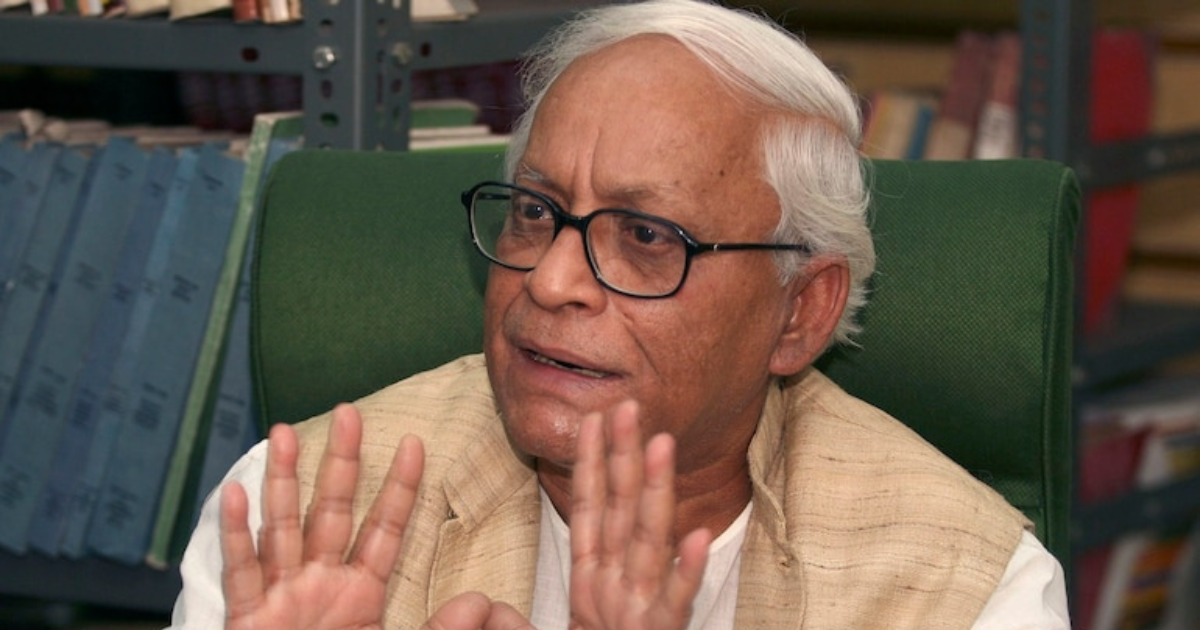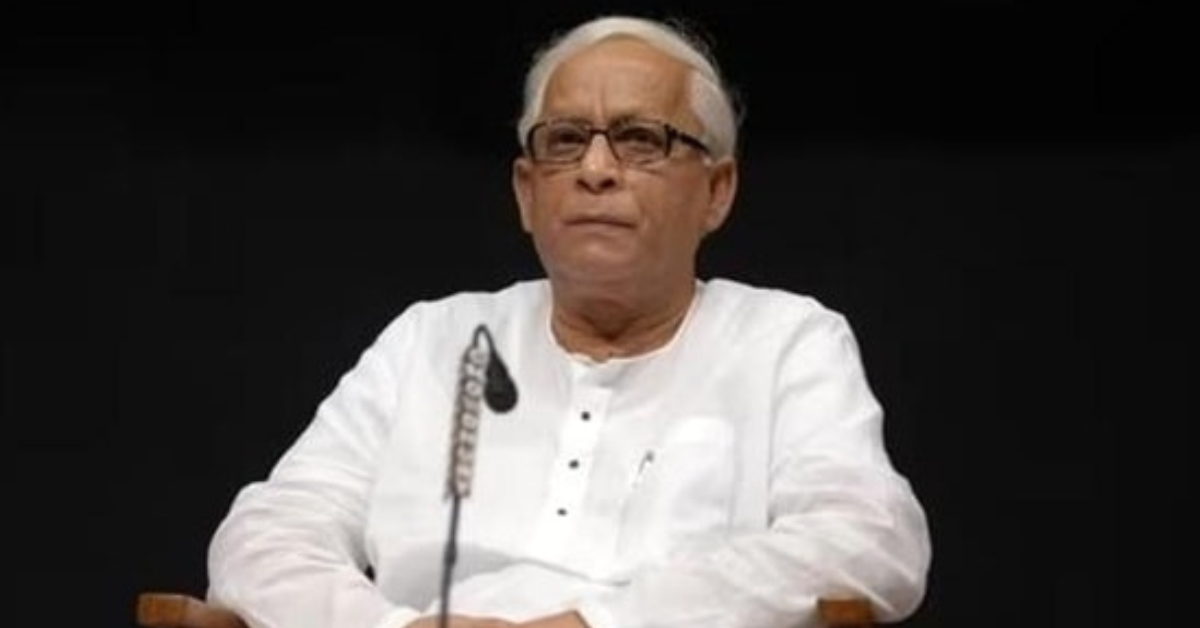West Bengal’s Political Shift From Bhattacharjee to Banerjee
Introduction
West Bengal, a state rich in cultural heritage and political history, has seen dramatic shifts in its political landscape over the years. From the era of Budhadeb Bhattacharjee’s tenure as Chief Minister under the Left Front government to the rise of Mamata Banerjee and her Trinamool Congress, the political narrative of West Bengal is both complex and influential. This article explores the evolution of West Bengal’s politics, the impact of key figures like Jyoti Basu and Meera Bhattacharya, and the profound changes in policies and public sentiment.
The Left Front Era and Buddhadeb Bhattacharjee
Buddhadeb Bhattacharjee, a prominent leader of the Communist Party of India (Marxist) took over as the Chief Minister of West Bengal in 2000, succeeding Jyoti Basu. His tenure, marked by a blend of continuity and change, was significant for the state’s political and economic landscape. Bhattacharjee’s leadership continued the Left Front government’s policies but also introduced new dynamics, particularly in land acquisition and industrialization.
The Left Front government, which had dominated West Bengal politics for over three decades, was known for its emphasis on rural development and social welfare. However, the latter years of their rule saw increasing criticism, particularly regarding land acquisition policies. These policies were crucial for industrial projects but led to significant public dissent and were a focal point in the political discourse.

Land Acquisition Policies and Public Backlash
One of the most contentious issues during Bhattacharjee’s term was the land acquisition for the Singur Tata Motors plant. The project, aimed at boosting the state’s industrial sector, faced fierce opposition from local farmers and activists. The land acquisition for the plant became a symbol of the tensions between development goals and local concerns, contributing to widespread protests.
Read also – https://palpalnewspro.com/bajrang-punia-the-triumphs-and-trials-of-indias-wrestling-star/
The backlash in Singur, along with the Nandigram violence, where clashes between police and protesters resulted in several deaths, significantly affected the Left Front’s image. These incidents highlighted the growing discontent with the Left’s policies, eventually contributing to the decline of their political dominance in the state.
The Rise of Mamata Banerjee and Trinamool Congress
In the wake of the Left Front’s declining popularity, Mamata Banerjee and her Trinamool Congress emerged as key challengers. Banerjee, known for her staunch opposition to the Left Front’s policies, capitalized on the widespread dissatisfaction, particularly with the land acquisition policies and the perceived neglect of the agrarian sector.
Mamata Banerjee’s rise was also a response to the broader political decline of the Left Front, exacerbated by issues such as the Singur and Nandigram controversies. Her leadership represented a shift towards a more dynamic and populist approach in West Bengal politics.
Public Service and Political Strategy
Banerjee’s political strategy was deeply rooted in addressing the grievances of the common people. Her emphasis on improving public services, focusing on grassroots issues, and addressing local concerns resonated with a large section of the electorate. Her governance style was characterized by rapid decision-making and a strong focus on public welfare, which marked a departure from the more bureaucratic approach of the Left Front.
Meera Bhattacharya and Personal Challenges
Amidst the political turbulence, personal challenges also played a significant role. Meera Bhattacharya, the wife of Buddhadeb Bhattacharjee, faced a prolonged illness, which impacted the personal life of the Chief Minister. Such personal circumstances often influence political leaders’ public perception and their ability to focus on governance.
The Chief Minister’s health, coupled with age-related ailments, including Chronic Obstructive Pulmonary Disease, became a concern. These factors contributed to the eventual political decline of Bhattacharjee and the Left Front, as the political landscape in West Bengal continued to evolve.
Jyoti Basu’s Legacy
Jyoti Basu, a revered figure in Indian politics, had a significant impact on West Bengal’s political framework. His tenure, marked by a focus on social welfare and rural development, set the stage for the Left Front’s long rule. Basu’s legacy influenced both Bhattacharjee’s policies and the broader political context in which Mamata Banerjee emerged.
The Role of Bengali Literature and Culture
Bengali literature and culture also played a role in shaping the political discourse in West Bengal. Cultural narratives and literary critiques often intersected with political issues, influencing public opinion and political movements. The rich tradition of Bengali literature provided a backdrop for the political and social changes in the state, reflecting and shaping public sentiment.
Read also – https://palpalnewspro.com/indian-mens-hockey-team-at-the-paris-2024-olympics-a-comprehensive-preview/
The IT Sector and Economic Development
In recent years, the IT sector has emerged as a significant driver of economic development in West Bengal. The shift towards a more diverse economic base, including the growth of the IT sector, represents a departure from the traditional focus on agriculture and heavy industry. This economic transition has been a part of Mamata Banerjee’s governance strategy, aiming to modernize the state’s economy and create new opportunities for growth.
Conclusion
The political journey of West Bengal, from the era of Buddhadeb Bhattacharjee’s Left Front government to Mamata Banerjee’s Trinamool Congress, reflects a broader narrative of change and adaptation. Key issues such as land acquisition, public service, and economic development have been central to this evolution. The impact of personal challenges, legacy figures like Jyoti Basu, and cultural elements like Bengali literature further enrich the story of West Bengal’s dynamic political landscape.
As West Bengal continues to navigate its path through political and economic changes, understanding this history provides valuable insights into the state’s ongoing transformation and the interplay of politics, public service, and personal influence.
FAQs
1. Who is Buddhadeb Bhattacharjee?
Buddhadeb Bhattacharjee was the Chief Minister of West Bengal from 2000 to 2011, representing the Communist Party of India (Marxist). His tenure followed Jyoti Basu’s long rule under the Left Front government and was marked by efforts to industrialize the state.
2. What was the Left Front government’s approach to land acquisition?
The Left Front government, under Jyoti Basu and later Buddhadeb Bhattacharjee, pursued land acquisition policies to support industrialization. This included acquiring agricultural land for industrial projects, which led to significant public opposition and protests, notably in Singur and Nandigram.
3. What were the Singur and Nandigram controversies?
The Singur controversy involved the acquisition of farmland for a Tata Motors plant, leading to widespread protests from local farmers. The Nandigram violence referred to clashes between police and protesters opposing land acquisition for another industrial project, resulting in several deaths and further unrest.
4. How did Mamata Banerjee and the Trinamool Congress rise to power?
Mamata Banerjee and her Trinamool Congress capitalized on public dissatisfaction with the Left Front’s policies, particularly regarding land acquisition and neglect of agrarian issues. Her party’s focus on grassroots issues and rapid decision-making helped them gain widespread support.
5. What impact did personal issues have on Buddhadeb Bhattacharjee’s political career?
Personal challenges, including the prolonged illness of his wife Meera Bhattacharya and his own health issues, such as Chronic Obstructive Pulmonary Disease, affected Bhattacharjee’s ability to lead effectively. These factors contributed to his political decline and the eventual loss of the Left Front’s dominance.
6. What role did Jyoti Basu play in West Bengal politics?
Jyoti Basu was a long-serving Chief Minister of West Bengal and a significant figure in Indian politics. His tenure established the foundation for the Left Front government’s policies and influenced the political environment in which his successors, including Buddhadeb Bhattacharjee, operated.
7. How has the IT sector influenced West Bengal’s economy?
The growth of the IT sector in West Bengal has been a significant factor in the state’s economic development, diversifying the economy beyond traditional industries. This shift aligns with Mamata Banerjee’s governance strategy to modernize the state and create new economic opportunities.
8. How does Bengali literature intersect with West Bengal’s politics?
Bengali literature often reflects and influences political and social issues in West Bengal. Cultural narratives and literary critiques contribute to the public discourse and provide insights into the political and social changes occurring in the state.
These FAQs provide clarity on key aspects of West Bengal’s political evolution and the figures and issues involved.



